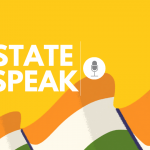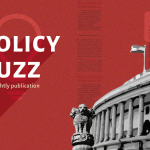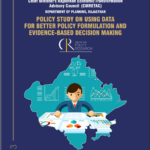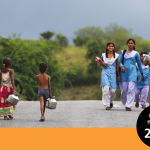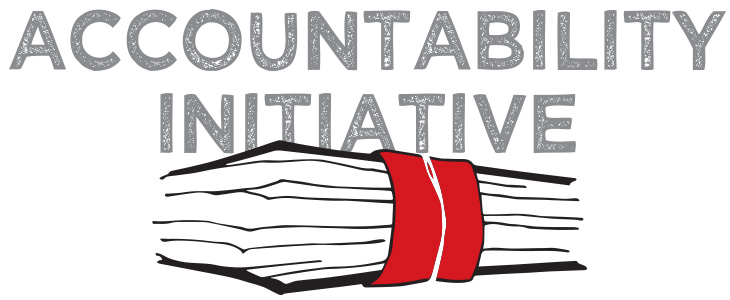
Roadblocks in the implementation of the RTE
13 August 2014
Government schools in India are perceived as places where the quality of teaching is questionable, and teacher absenteeism high. While these views may not be entirely accurate, there are some concerning trends that the data points towards.
Learning levels in government schools are low across the country (currently, only 41% of students in class 5 can read a standard 2 level text while only 20% of kids in grade 5 can do division), and have been falling consistently, as recorded by ASER between 2009-2013.The gap in the reading and arithmetic levels between private and government schools has also grown consistently from 2009 to 2013 (ASER report, 2013). The decline was the sharpest in 2011, a year after the RTE was implemented. Whether the implementation failures of the RTE has been the reason behind this is debatable. What is clear, however, is that the implementation of the RTE has not been able to reverse this downward trend in basic reading and math levels.
In this blog, I will be looking some of the possible reasons because of which RTE has not been as effective as envisaged, particularly in the government run schools.
The RTE was enforced across India on the 1st of August, 2010. This was more than four years ago. One might then expect that by now, most, if not all of the rules and guidelines of the RTE would have been implemented. Unfortunately, many schools have been unable to fulfil the input and PTR (pupil teacher ratio) requirements which are the primary goals the RTE aims to achieve. The rationale behind this focus on inputs is that if all the input needs are met, the quality of education will improve as the lack of these inputs is the primary obstacle that prevents high quality teaching from taking place in government schools. However, as we have seen, the data suggests otherwise. While inputs are important, perhaps other hurdles must be crossed before increasing inputs to make a significant difference to the quality of education delivered in government schools.
The average student to teacher ratio in Bihar is around 57:1, with an average of 87 students per classroom (Economic Times). These ratios are much higher than the ideal average of 30:1. There are several reasons for this extremely high PTR, one of them being a large human resource crunch . During the course of my work, I was taken for a field visit to Bihar to interact with government officials and others associated with government schools. One of the schools we visited was running three separate schools in the same block. A few days later, we went to another block without informing them beforehand, and found that the first three schools we went to didn’t have headmasters present in schools for the interview. Later, we finally reached a school where there was a headmaster, but with one of the other two teachers absent, leaving only two people to look after 5 separate grades.
One question that needs to be addressed is – ‘Who is holding these schools responsible, for the results they deliver, the quality of teaching, and the teacher absenteeism’?
In private schools, parents pay the school directly, and can therefore hold them accountable because of the direct relationship between the number of children and the revenue of a school. These schools cannot afford to lose too many students because of the losses it will sustain. These parents have the choice to move their children to other schools and can complain to authorities present in the school such as the principal and headmaster, who, unlike in government schools, often have the authority and autonomy to remove, reprimand or otherwise deal with parental complaints, even the ones about teachers. Moreover, parents will often move their child out of government schools and put them in a private one, in spite of the additional costs incurred by them. This phenomena can be seen in the ASER report, which claims that the percentage of children enrolled in private schools increased from 18.7% to 29% in rural India between 2006 and 2013. This reduces the number of parents who will speak out against the government schools, making them even less accountable to the people their services actually reach.
To counter this, there is an SMC (School Management Committee) set up for every school. The SMC’s are envisioned as committees consisting primarily of the people who send their children to the school in the area. It was thought that because a majority of the members are affected in the long term by how the schools runs, there would be significant engagement by the SMC’s and through that, an improvement in the functioning and therefore quality, of the school. In their implementation, however, SMC’s don’t live up to the legislative vision that they had been proposed with. In many places, while SMC’s exist on paper, they are scarcely active, with a sparse number of members who regularly attend the meetings. This is to be expected, given that few incentives exist for SMC’s to function actively( more information on SMCs is mentioned here).In some places, the Headmaster and a school teacher are the two signatories to school plans, which can potentially bypasses the function of the SMC entirely.
Another system that is designed to maintain quality control and create an environment where teachers are made accountable, is that of monitoring. CRCC’s monitor schools to ensure the teachers are present, teaching and submits various observations to the BEO. Even if we ignore the fact that the CRCC’s may not get much time to monitor the schools because of the other work they also have, they tend to look only at the tangible aspects of the RTE such as infrastructure, student and teacher attendance etc., and not the quality of education being imparted. CRCC’s also have too many schools for them to effectively look after (some have 22-23 schools), and BEO’s have several times more than this. Another major problem is that there are high percentages of vacant positions not only at the teacher level, but also the CRCC and BEO level.
These are only some of the problems that the education system and the RTE faces in transforming the education scenario in India. Given the scope of the program and the complexities it must deal with, such problems are expected. But these must be overcome if we are to transform the education in India to any reasonable degree. These are not problems which will be solved only by a higher budget allocation (in fact, the expenditure per child roughly tripled when the RTE was implemented). Rather, they require a re-thinking and re-structuring of the systems within the RTE.


